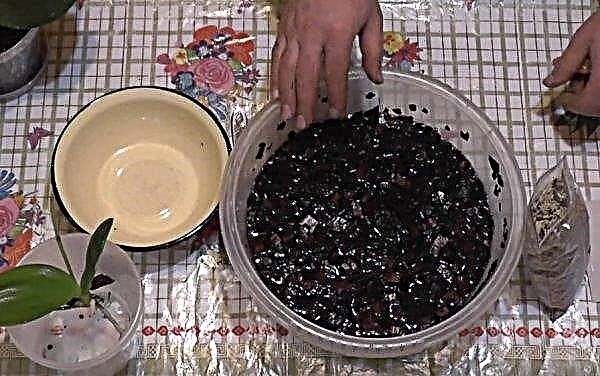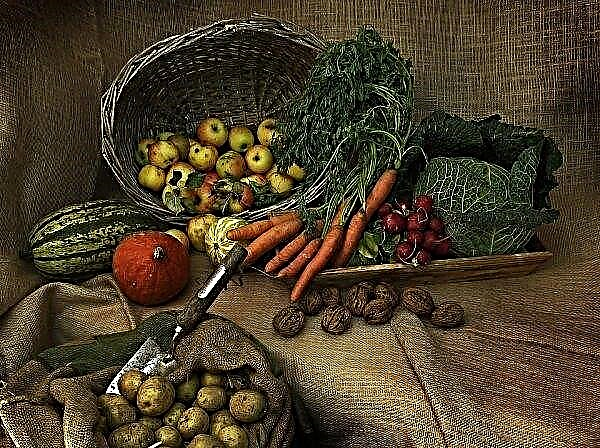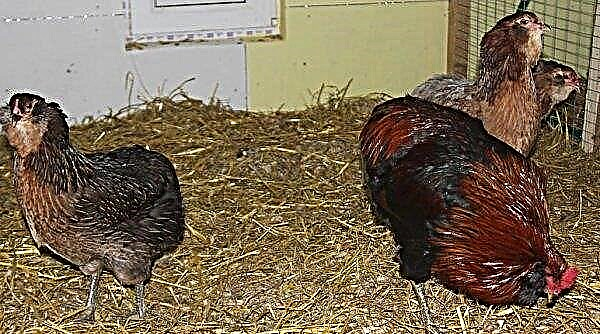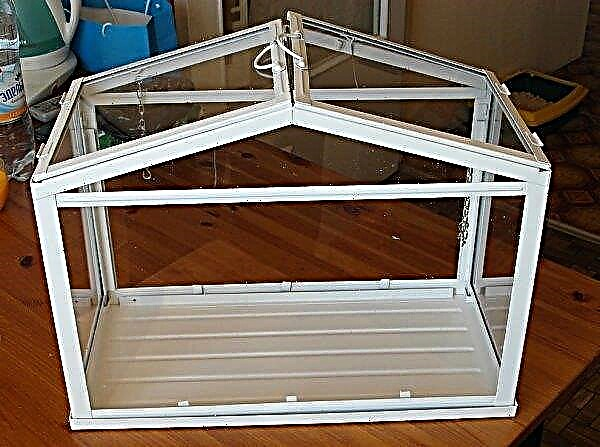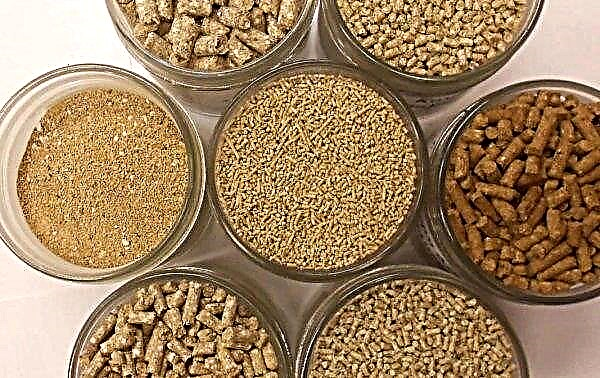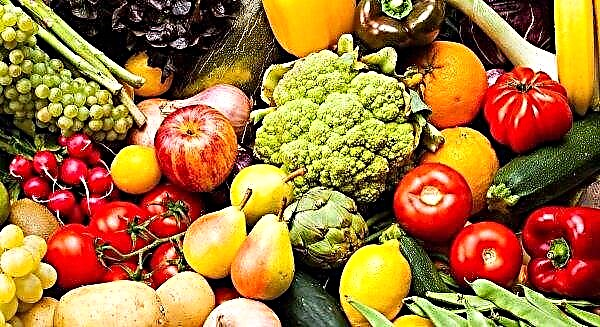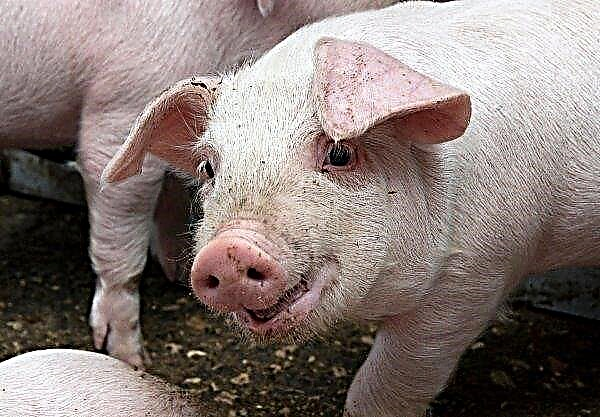Gourds for successful cultivation need a lot of heat and light. Such conditions can be ensured by planting a culture in a greenhouse, where the microclimate can be regulated. Today we will talk about growing watermelons in a greenhouse.
What varieties are suitable for growing in a greenhouse
For greenhouse conditions, early ripening varieties with a low output weight are considered most suitable.
These include:
- Skorik - ripening period 60-65 days, weight up to 4 kg. The fruit is in the shape of a ball, peel with a strip, not thick, smooth. The pulp is juicy, fibrous, with a pronounced aroma;
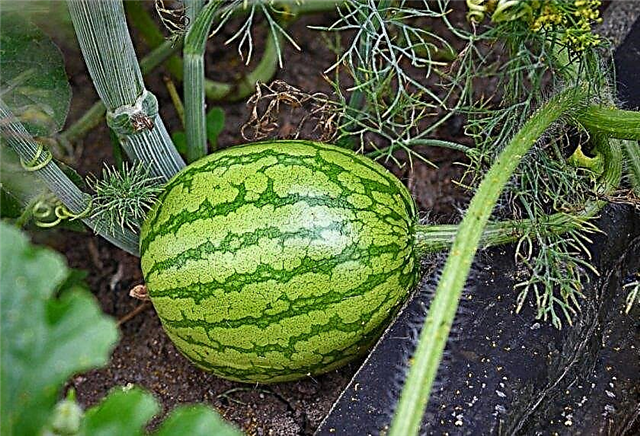
- "Spark" - matures in 85 days, weight up to 2.5 kg. A spherical fruit with a dark green peel and sweet, juicy pulp. The variety is immune from gourds;

- "Prince Albert F1" - ripening period up to 80 days, weight up to 3 kg. Thin-skinned, yellow-colored fruit with sweet sugar pulp. The disadvantage is that it is not stored for a long time;
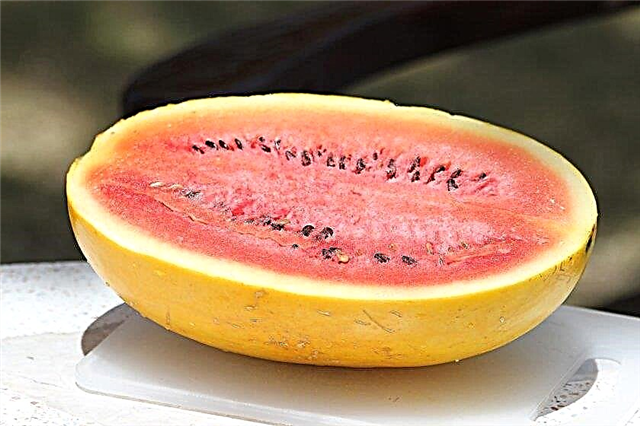
- "Prince Hamlet F1" - ripening period 75-80 days, weight up to 2 kg. It is distinguished by strong immunity and resistance to temperature changes, it is popular in the suburbs. It has yellow flesh with a small number of seeds, a thin striped peel.
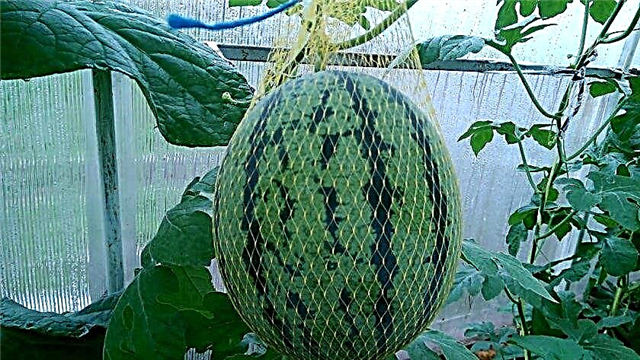
Preparatory Activities
As the watermelon bush develops, stretching along the support, the height of the greenhouse should be at least 1.7 m. There should be no gaps in the walls or frames of windows, for a thermophilic culture, a draft is contraindicated. An ideal option for gourds is a polycarbonate coating. The material has better bandwidth than film, and it is easier to regulate humidity in the room.
Greenhouse preparation
In the fall, a greenhouse is being cleaned, preparing it for spring crops. If you do not have time to wash the room in the fall, you need to do this before landing. Be sure to spill the prepared soil with a disinfecting solution: copper sulfate or Bordeaux liquid. In the room you need to achieve a temperature of about + 30 ° C, humidity 60%.
Important! With high humidity, gourds are affected by spores of fungi.
Soil requirements
Plants need a loose, perfectly moisture and air permeable soil with an acidity of 6-7 pH. In autumn, the soil is dug with humus 4 kg / m². In the spring, in order to provide heat in the soil, heating is prepared: the upper layer of the ridge is removed, a layer of humus mixed with hay is laid. The mixture is thoroughly shed with hot water and covered with a layer of soil. If it is possible to arrange water heating, pipes are laid under the ground through which hot water flows.
Growing and caring for seedlings
Seedlings are sown in the month of April. Before sowing seedlings, the seeds are calibrated by placing them in clean water. Pop-up instances are rejected. Planting material is kept for half an hour in a solution of potassium permanganate for disinfection. For germination, dried up after processing, the seeds are wrapped in wet gauze. For several days placed on a heating battery. As soon as they hatch, carry out the sowing.

In garden soil, mixed 1: 3 with humus, add 3 g of any potassium and nitrogen composition and 9 g of phosphorus per 10 l of soil. In order not to disturb the root system of plants with picks, seedlings are planted in peat pots with a diameter of up to 10 cm. The seed is buried by 3 cm, laying it on its side. The top of the cups is covered with a film.
For the normal development of plants, containers with crops are placed in a special microclimate:
- temperature - + 22 ... + 25 ° С;
- humidity - 55-60%;
- lighting is bright, diffused.
Did you know? Watermelons come from South Africa, there, in the Kalahari desert, you can still find a wild specimen weighing up to 200 g.
Crop care is carried out as follows:
- watering - as the soil dries, water at room temperature, standing;
- top dressing - not earlier than 10 days after germination, using mineral compounds.

Feeding option for 2 liters of water:
- 4 g of ammonium nitrate;
- 3 g of potassium sulfide;
- 10 g of superphosphate.
Transplanting
Seedlings are planted in May, at this time there is no threat of frost, the air and soil are warm enough.
Disembarkation Technology:
- Dig a hole under each cup.
- Place two peat tanks in one hole, straighten the seedlings, directing the lashes to the sides and sprinkle with soil.
- The root neck should remain above the ground.
- After the plants are watered, the bed is mulched.
How to care for watermelons in a greenhouse
Further care of the seedlings is standard procedures.

Compliance with humidity and watering
The temperature in the greenhouse must be monitored, the thermometer should not rise above + 30 ° C, fall below + 20 ° C. An increase in humidity of more than 60% must not be allowed. To maintain the microclimate in the desired mode, the temperature and humidity are regulated by natural ventilation in the greenhouse. Watering the culture is carried out on the soil, the water is defended, heated in the sun to t + 20 ° C. In order not to flood the plants, the frequency of watering is determined by the state of the foliage: if the leaves are slightly faded, it's time to water.
Important! When watering, you need to ensure that drops of water do not get on the foliage and stems, which can lead to decay.
Feeding
At the beginning of the development of seedlings, plants can be fed with an organic composition: rotted manure is poured with water 1 to 10. The solution is infused for 24 hours, then watered under moistened soil under the root.
During the setting of flower buds, the plant is fertilized with a mineral mixture in 10 l of water:
- 10 g of ammonium nitrate;
- 25 g of potassium sulphide;
- 30 g of superphosphate.
During flowering and fruiting, 5 g of boric acid are added to the mixture described above.
Pollination
It is impossible to guarantee 100% pollination in a greenhouse by insects, therefore summer residents carry out this process manually.
The technology is as follows:
- In the early morning, the largest male flower is plucked.
- Tear off or bend back the petals.
- The stigmas of the female flower are touched by the male anther, thus pollen is showered.
Garter and bush formation
When fruits the size of an average tomato appear, the bush must be correctly formed:
 Bush formation pattern
Bush formation pattern
- Over the fifth sheet, pinch the growth point.
- Remove the lowest shoots and stems on which there are no ovaries.
- On the side lash, the third sheet over the female flower is counted and shortened.
- The same procedure is performed on the male flower, counting 7 sheets.
- For the normal development of fruits on one bush, it is not recommended to leave more than 2 fruits.
- While the watermelons have not begun intensive growth in width, they are conducting the stepsoning of new shoots.
A vertical type of trellis is installed around the perimeter of the room, with a distance between the supports of 40-45 cm. The scourges are tied to the supports on which the nets for the fruits are installed. Watermelons that have reached the size of a large apple are placed in nets and tied so that it does not break under the weight of a ripening fruit.
Video: growing watermelons in a greenhouse
Dates and basic rules for harvesting
The maturity of the watermelon is indicated by the darker color of the stripes, if the variety is striped. You need to knock on the fetus with your knuckles: a muffled sound indicates ripeness. For 3-4 days before harvesting, they stop watering the crop. The berries are picked by cutting the stem, so that 3 cm of the root remains. The fruits are dried, they are transferred by paper during transportation and storage. Touching the fruit can lead to rot infection.
Did you know? In the city of Kherson in Ukraine, a monument was erected in honor of the watermelon.
Possible mistakes when growing watermelons in a greenhouse
Beginners in growing watermelons make some mistakes, because of which the culture is sick, the quality and quantity of the crop is reduced.

Useful recommendations from experienced gardeners:
- The location of the greenhouse in the shade will not give enough light for the development of the culture. If the situation cannot be changed, install lamps in the room for additional lighting.
- The most resistant to changes in temperature and disease are hybrid varieties of plants.
- Seeds and soil must be decontaminated, this will serve as a prevention of diseases and the appearance of pests. The same goes for autumn cleaning in the greenhouse.
- Seeds must be sprouted, because the shell is too hard.
- When sowing, the seed is placed on its side, which accelerates the growth of the shoot.
- The root system of the seedlings is fragile, the sprouts do not tolerate picking well, so the ideal option for the container is a peat cup.
- When planting on greenhouse beds between seedlings, you must leave at least 70 cm of distance so that, when developing, the bush receives enough light and does not obscure other bushes.
- If dressing of seedlings is missed, due to which the bushes are frail with yellowed leaves, you need to add dressing: 15 g of ammonium nitrate / 5 l of water.
- Watering by irrigation or sprinkling is not suitable, the method of applying top dressing on the sheet is also not suitable. This increases the humidity in the room, which is fraught with fungal diseases.
Watermelon is a healthy and tasty fruit; both adults and children love it. Growing a sunny berry in your own area is not so difficult. It is important not to allow changes in the microclimate in the greenhouse and to follow the care procedures on time.






